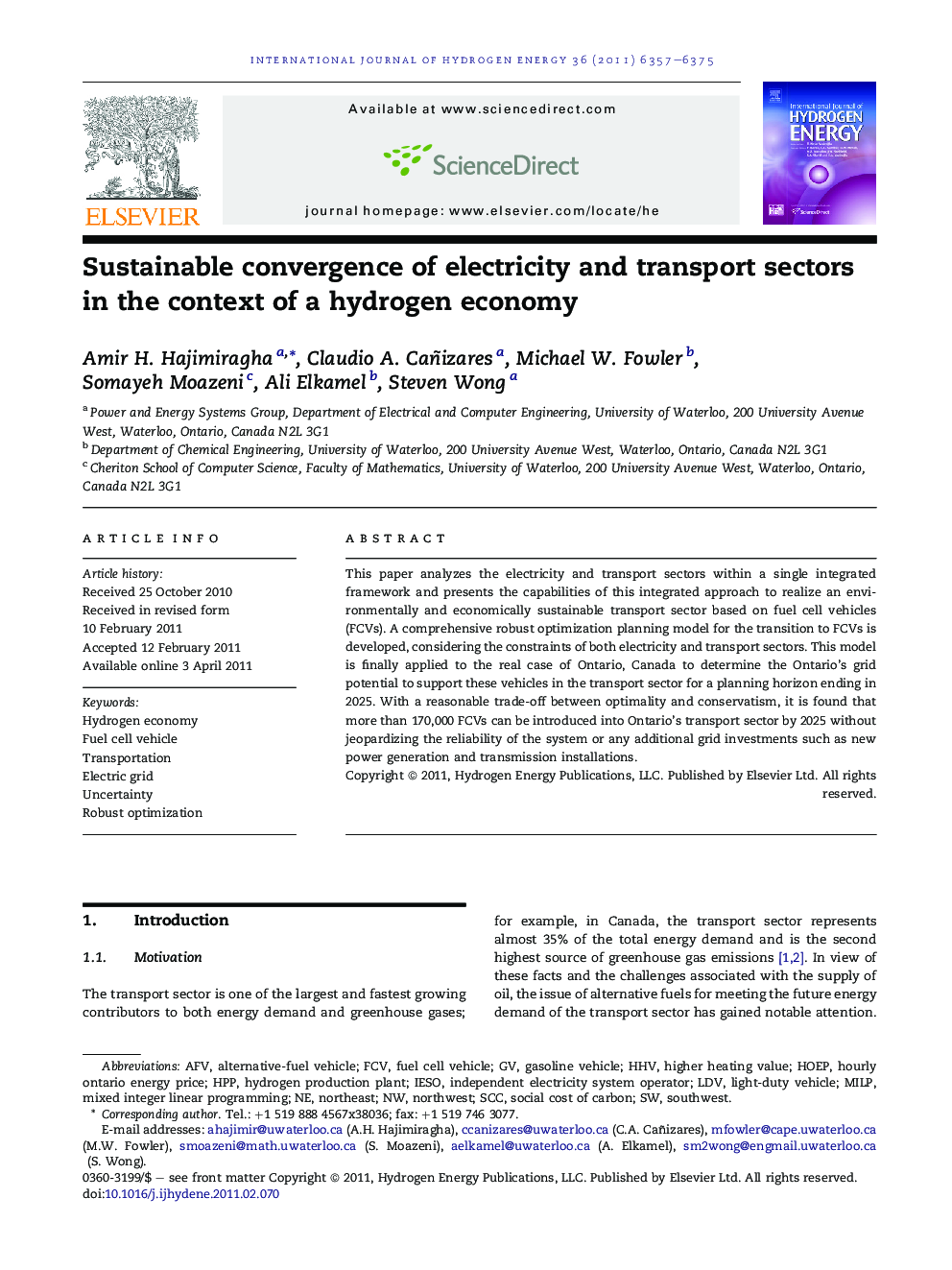| Article ID | Journal | Published Year | Pages | File Type |
|---|---|---|---|---|
| 1275993 | International Journal of Hydrogen Energy | 2011 | 19 Pages |
This paper analyzes the electricity and transport sectors within a single integrated framework and presents the capabilities of this integrated approach to realize an environmentally and economically sustainable transport sector based on fuel cell vehicles (FCVs). A comprehensive robust optimization planning model for the transition to FCVs is developed, considering the constraints of both electricity and transport sectors. This model is finally applied to the real case of Ontario, Canada to determine the Ontario’s grid potential to support these vehicles in the transport sector for a planning horizon ending in 2025. With a reasonable trade-off between optimality and conservatism, it is found that more than 170,000 FCVs can be introduced into Ontario’s transport sector by 2025 without jeopardizing the reliability of the system or any additional grid investments such as new power generation and transmission installations.
